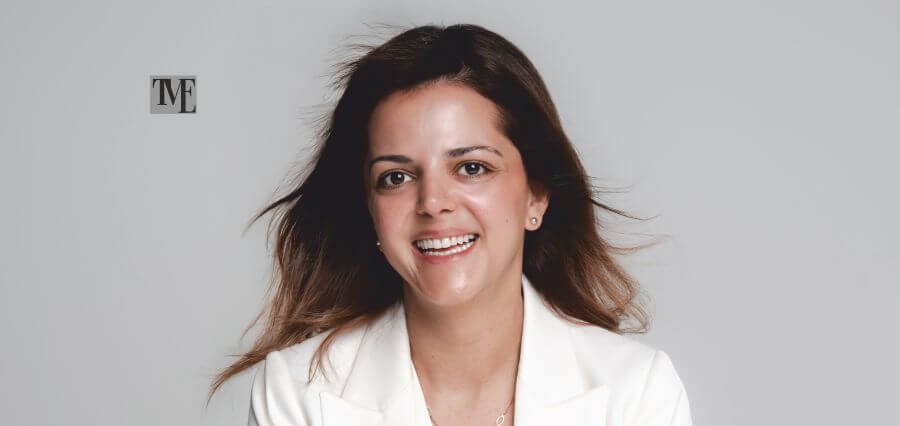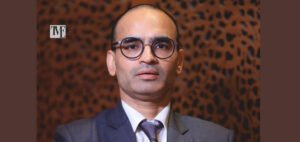In the intricate world of façade engineering, Susanna Noureddine stands out as a leader characterized by technical prowess and unshakeable dedication to authenticity. As a Technical Director at WSP, she has successfully navigated her profession, not by conforming to conventional norms, but by embracing her own strengths and championing inclusivity. Her story highlights the strength of authentic leadership and the value of diverse voices in shaping the future of engineering.
From Academia to Professional Practice
Noureddine’s journey to facade engineering started with a master’s degree focused on balancing contemporary and historic architecture and engineering principles. Her advanced studies in building physics, materials science, and structural analysis provided a solid foundation for her future career. She appreciates the collaborative atmosphere of her program, which allowed her to develop her design thinking and problem-solving abilities.
Following the attainment of her master’s degree, Noureddine worked with one of the leading curtain wall supply firm, where she had hands-on experience in production, assembly, and installation procedures for aluminum systems. Her role was to help shape designs that met both aesthetics and functionality requirements while responding to varying climatic conditions. Her challenges as a young engineer, such as dealing with intricate materials and working with architects, brought into perspective the importance of effective communication and collaboration.
Influence of Mentorship and Sustainable Design
The renowned facade engineering professional Professor Dr. Heusler played an impactful role in shaping Noureddine’s professional journey. Through mentorship, his approach underscored discovery, rigorous critical analysis, and a passion for sustainability. Noureddine states, “One of the most impactful lessons I learned from him was the importance of sustainability in facade engineering.” His lessons in coupling design with environmentally friendly responsibilities oriented her project thinking toward prioritizing energy efficiency coupled with aesthetic concerns.
Through the mentorship of Professor Heusler, Noureddine increased in confidence and had a greater appreciation for her work’s potential. His push for ongoing learning has been an abiding tenet throughout her career.
Dubai: A Crucible of Innovation and Leadership
A turning point in Noureddine’s career was when she took a senior consultant role in Dubai. Moving to a foreign country was challenging, but she welcomed the chance to expand her professional experience. As a senior consultant, she managed projects that required technical skills, strategic thinking, and creativity, which helped shape the city’s
vibrant architectural scene. “Working in such a diverse and dynamic city opened my eyes to a different perspective on architecture and engineering,” she says. Noureddine ultimately headed the facade engineering team, managing technical quality, innovative facade systems, and project delivery. This experience made her a better leader and extended her technical experience, paving the way for what was to come.
Building a Thriving Practice at WSP
Noureddine moved to WSP after six prosperous years in Dubai, when she was tasked with taking over a smaller facade engineering team at WSP. . Beginning with a small team, she tactically grew it to comprise 44 skilled engineers. “By determination and strategic thinking, I have been able to grow our facade consultancy team to a current pool of 44 skilled engineers,” she says. Through this growth, the team is able to take on bigger and more complicated projects, challenging the limits of design and innovation.
Adapting and Evolving with Time
During her career, Noureddine was frequently the sole woman in the workplace. Please integrate this somehow “ Throughout my career, every manager I’ve had has been a man. And I’ve been fortunate—truly—to have had managers who supported me, challenged me, and pushed me beyond the limits I thought I had. Their belief in my potential gave me opportunities to grow, lead, and succeed. They led with authority, logic, structure, and assertiveness. I admired their decisiveness and drive. Naturally, their leadership styles began to influence mine. So I adapted. I toughened up. I learned how to speak the language of dominance in meetings. I mastered the art of assertive feedback. I learned to compartmentalize, to control emotion, to manage my team with an even tone even when I was overwhelmed. I made sure my work was not only good—but undeniable. I learned to walk into rooms with confidence, even if I had to fake it some days.”
She calls this “an emotional, mental, and professional journey that constantly tests your confidence and resilience.” She felt she had to prove herself and gain the trust of her peers and her team. “It always felt like a battle: me against them,” she remembers.
To succeed, Noureddine adapted, learning to “speak the language of dominance” and mastering assertive feedback. She compartmentalized her emotions and managed her team with an even tone, ensuring her work was undeniable. This approach allowed her to advance, lead larger teams, and gain respect.
But this accommodation had a price. “During the last two years, something in me started to change,” she says. Noureddine came to see the burnout of leading in a manner that did not feel natural to her, stifling her empathy and engaging in conflict with detachment. “It wasn’t sustainable. More importantly, it wasn’t authentic,” she admits.
Embracing Authenticity: A Leadership Transformation
Noureddine came to see the tension between her instincts and the stereotypically “masculine” style of leadership she had fallen into. She began to listen to her intuition, making room for emotion and intentional action rather than just being the loudest voice.
“I began to view my team as a group I needed to inspire, rather than dominate,” she says. To her surprise, her team was more receptive. “I was afraid of being seen as ‘too emotional’ or ‘too soft.’ But what I found was respect increased even further.”
Noureddine understood that honoring her feminine qualities—empathy, intuition, collaboration, and vulnerability—made her a more effective leader. She still upholds high expectations and makes tough choices, but she now does so with humanity. “I don’t bury my values for the sake of fitting in,” she asserts.
Leading with Presence and Purpose
Having a majority-male team that is older than her comes with special challenges. Noureddine has developed her strategic thinking and presence by anchoring in her “why”—her vision for the team, what impact she wants to have, and what culture she wishes to create.
“Respect isn’t earned due to a title. It’s earned by being consistent, clear, and caring,” she reaffirms. She attempts to be fully present, with a space for others to be themselves. “I’ve learned leadership isn’t about being perfect—it’s about being present,” she concludes.
A Vision for Change: Empowering Future Leaders
Noureddine is dedicated to bringing about change, supporting greater numbers of women in leadership and promoting diverse ways of thinking. She seeks to “leave the ladder extended for others behind me” by mentoring future generations of women and campaigning for inclusive leadership cultures.
Her message is unambiguous: “You don’t have to become someone else to be successful. You just have to become more of who you already are.” Noureddine feels that great leadership is about forging one’s own path with courage and conviction.
She invites others to own their real selves, believing that characteristics at one time considered flaws can turn out to be their strongest positives. “Leadership is not one-size-fits-all. It’s not about copying what has been accomplished previously—it’s about forging your own path of courage and conviction,” she affirms.
Building Belief: Overcoming Resistance
Three years ago, Noureddine took over a team that was isolated, seasoned, and deeply ingrained in their culture. Gaining their confidence was her greatest challenge. “The team I inherited had no reason to believe me. They did not know me. They did not see what I saw,” she remembers. She realized that establishing belief took more than planning strategy.
In spite of occasional bouts of self-doubt, Noureddine held on, concentrating on transparent communication, risk awareness, and purpose alignment. She built a safe environment for open discussion and encouraged collaboration.
Connecting to the “Why”: Translating Vision into Reality
Noureddine knows that a vision is only effective if individuals can see themselves in it. She has worked hard to render her vision into something that strikes a chord within others. “One of the most difficult aspects of leadership is taking that vision—what lives so vividly in your own mind—converting it into something that really resonates deeply with others,” she says.
This involves constant reaffirmation, continuous discussions, and customized mentoring. Noureddine focuses on humility, acknowledging the fact that what is obvious to her might not be so evident to everyone else.
In the last three years, Noureddine has concentrated on bringing individuals to the “why” and illustrating how their efforts add up to something larger. She has created a mentorship and supportive culture so that nobody gets left behind.
Continuous Challenges and Growth
The journey has not been without its challenges. Building a cooperative atmosphere among a big and diverse group of people takes constant effort and dedication to open communication. Noureddine cites the need to change leadership tactics to fit the changing needs of her team. Noureddine continues to evolve her leadership style, understanding that effective leadership is an ongoing process of learning and self-improvement. She is committed to creating a culture where all members feel valued, supported, and empowered to become their best selves.
“As I reflect on my journey, one truth stands out with crystal clarity: I would not be where I am today without the unwavering support, belief, and guidance of my current mentors and managers at WSP. In a world that often demands resilience, strength, and constant performance—especially as a woman navigating a male-dominated space—having people who not only guide but see you makes all the difference. My mentors at WSP have done more than offer advice; they have offered me mental clarity, emotional support, and the confidence to embrace the leader I am becoming.
The conversations weren’t always grand. Sometimes, it was a quiet check-in, a passing comment, or a moment of active listening that made the greatest impact. They offered more than mentorship—they offered space. Space to grow, space to fail safely, and space to reflect. Their presence became a mental anchor in high-pressure moments, and their words still echo in my decision-making today. Without their mentorship, I truly don’t know if I would have had the clarity to embrace my own leadership style. Their guidance has been instrumental not only in the way I lead but in the way I see myself as a leader.
To my mentors and managers: thank you. For your patience, your insight, your belief in me, and your ability to meet me where I am—again and again. You have changed the trajectory of my growth, and for that, I will always be grateful.”
Leading with Empathy and Understanding
Noureddine’s focus on empathy has shifted the dynamics of her team. She has tried to provide a secure environment in which people can speak out when they are afraid, present their ideas, and get helpful criticism. This has resulted in higher cooperation, enhanced innovation, and an improved sense of community in the team.
Noureddine feels that building the individual needs and aspirations of her team members is critical to being a successful leader. She makes it a point to reach out to each individual at a personal level, establishing trust and mutual respect.
A Legacy of Legitimate Leadership
Susanna Noureddine’s path illustrates the transformative effect of genuine leadership, technical know-how, and commitment to diversity. By accepting and playing to her own special strengths and defying traditional norms, she has not only gained individual recognition but has also created a new vision for the field of facade engineering.
Noureddine’s path is a realization of the strength of leading by presence, purpose, and a deep faith in others. “Now, it’s me—fully, authentically, unapologetically—leading the way forward.”





